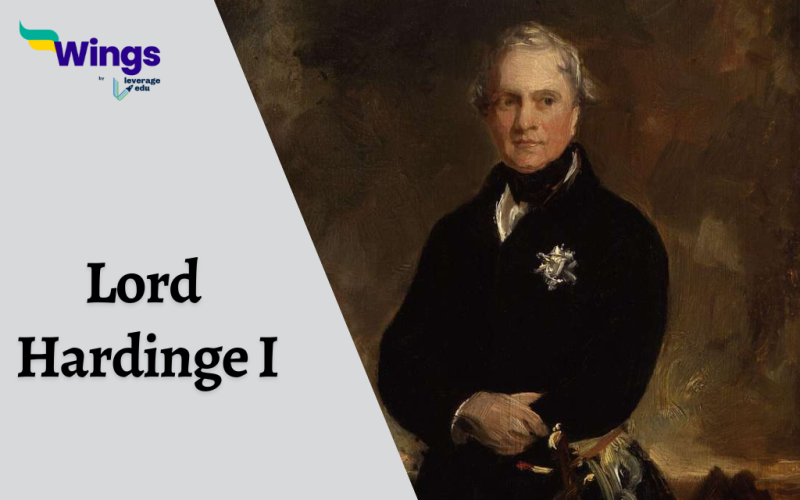Lord Henry Hardinge was a prominent figure in 19th-century British history. He embarked on a multifaceted journey as a statesman, soldier, and colonial administrator. His life unfolded against the backdrop of significant historical events like being the Governor-General of India during the first Anglo-Sikh war, serving in the Peninsular War and the Waterloo campaign, and being commander in chief during the Crimean War, thus shaping not only his trajectory but also the course of British imperial history.
Table of Contents
What was the Early Life of Lord Hardinge 1 like?
Born on the 30th of March, 1785, he was educated at the Sevenoaks and Durham Schools. Lord Hardinge 1 began his military journey at age 14 when he joined the British Army on the 23rd of July, 1799. He was put into the Queen’s Rangers, a military corp in Upper Canada. Lord Hardinge 1 then went on to be promoted to various positions throughout his adolescence and later at the age of 22 he studied at the Staff College in High Wycombe.
Also Read: What is the Difference between Governor-General and Viceroy
What was the Role of Lord Hardinge 1 in India?
In the year 1844, Lord Hardinge 1 succeeded his brother-in-law, Lord Ellenborough, as Governor-General of India. His transition from a military career to politics was seamless further reflecting his adaptability and astuteness.
Also Read: From Trade to Territory- The Company Establishes Power
Lord Hardinge 1’s Role in the First Anglo-Sikh War
During the time of Lord Hardinge 1, the first Anglo-Sikh War commenced from 1845 to 1846.
- A tribal war erupted after the death of Maharaja Ranjit Singh as to who would be next in line, this weakened the foothold of the Sikhs. The British saw this as an opportunity to expand their empire, which resulted in the first Anglo-Sikh War.
- Under Sir Hugh Gough, Lord Hardinge 1 served as the second in command.
- There were a series of Battles that began on the 18th of December, 1845 the very first being the Battle of Mudki.
- The British were then victorious in the following battles:
- Battle of Ferozshah on the 21st of December, 1845
- Battle of Aliwal on the 28th of January, 1846
- Battle of Sobraon on the 10th of February, 1846
- The Treaty of Lahore, signed by Maharaja Duleep Singh on the 9th of March, 1846 and the Treaty of Amritsar signed by Maharaja Gulab Singh on the 16th of March, 1846 concluded the war.
- Lord Hardinge 1 was later given the title, Viscount Hardinge of Lahore.
- Thus, the British territory expanded to areas of Beas and Sutlej.
Also Read: India’s Journey to Independence from 1857 to 1947
What was the Life of Lord Hardinge 1 after he left India?
After Lord Hardinge 1’s tenure in India as the Governor-General, he left for England in the year 1848. He took on the role of Master General of the Ordinance in the year 1852. Moreover, he also directed the Crimean War from the year 1853 to 1856. He passed away on the 24th of September, 1856 at the age of 71.
Relevant Blogs
| Lord Cornwallis | Lord Curzon |
| Lord Lansdowne | Lord Dalhousie |
| Lord Canning | Lord Amherst |
| Lord Macaulay | Lord Lytton |
| Lord Minto I | Lord William Bentinck |
| Lord Charles Metcalfe | Lord Irwin |
FAQs
Lord Hardinge was famous for the First Anglo-Sikh in 1845. The Treaty of Lahore, signed by Maharaja Duleep Singh on the 9th of March, 1846 and the Treaty of Amritsar signed by Maharaja Gulab Singh on the 16th of March, 1846 concluded the war because of Lord Hardinge.
The tenure of Lord Hardinge 1 as the Governor General of India was from 1844 to 1848.
Lord Charles Hardinge was Governor-General and Viceroy of India from 1910 to 1916. He was the grandson of Lord Henry Hardinge 1 who was also the Governor General of India from 1844 to 1848.
We hope you liked what you read. If you want to read more articles like this you can visit our general knowledge page on Indian History!
 One app for all your study abroad needs
One app for all your study abroad needs













